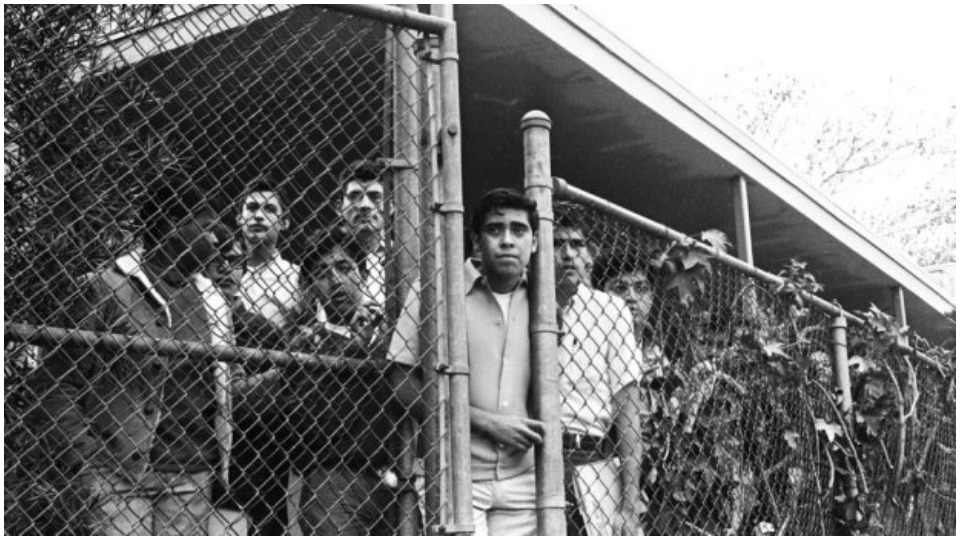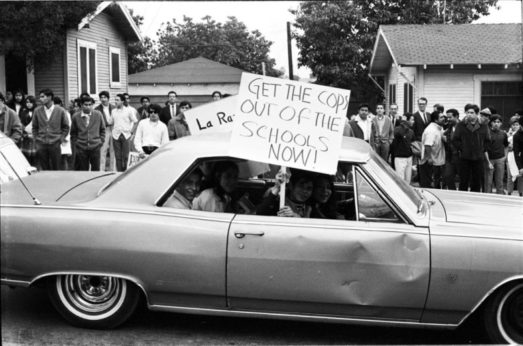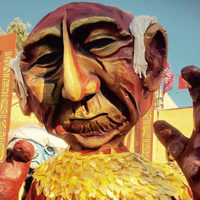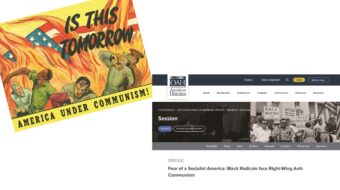
As I walked into the student quad at Los Angeles City College the morning of March 8, my attention was grabbed by this short, long-haired dude with John Lennon rimmed glasses shouting into a megaphone as he stood on an eating table.
“At this moment, students at East Los Angeles high schools are preparing a massive demonstration to protest the inferior quality of education they and generations of students before them have received.”
I moved closer to listen. He said his name was Jimmy Soliz, and that he was one of a handful of Mexican-Americans on campus who were ready to board a van parked on Vermont Avenue to head to Lincoln High School, where at 10 am a walkout was to take place. He invited us to join them. Along with an organization known as the Brown Berets, we would be entrusted with protecting the students by creating a buffer between them and the authorities (police and principals).
I had graduated a year earlier from Lincoln High School not knowing how to read and write proficiently. At Los Angeles City College, I was struggling: At the time of the walkouts I was on academic probation, and working a full-time graveyard shift.
Listening to Jimmy explain what life was like for Mexican-American students in Los Angeles triggered memories of my nightmarish school experience. At Hollenbeck Junior High, I had been expelled for hitting a white teacher who had grabbed me in anger and called me a “dirty Mexican.” Before that I had been suspended and swatted—physically punished—many times for speaking Spanish at school. Those were English Only times. Even though my mother had urged me to ask the counselors to give me college preparatory courses, they assigned me to shop classes instead.

The moment Jimmy made reference to Sal Castro as the teacher who helped the student leaders organize and articulate the demands of the protest, my mind was made up. Sal had been my senior civics teacher, and was one of a handful of non-white teachers at Lincoln who had ever given me encouragement. He never made me feel stupid or inferior because of my language deficiencies. But rather made me feel welcomed when I walked across the threshold of his classroom.
When the college students arrived, we were not just from LACC, but also from UCLA and other campuses. We quickly lined up on the edge of the sidewalk along North Broadway in front of Lincoln High School. At ten o’clock a fire alarm went off, and the students streamed out chanting numerous slogans that at the time were novel to me: Schools Not Jail! Education Not Eradication! Chicano Power!
Cop cars and helicopters and television crews created an exhilarating commotion. After the first wave of student protestors had joined the picket line, we paced back and forth in front of the school. Leading the contingent of college students were the Brown Berets, who wore a militarized uniform consisting of khaki shirt and a brown beret with a yellow emblem that read “La Causa.” The administrators locked the gates. We encouraged students still inside to join the demonstration. For an hour we marched and chanted, cheering on those who managed to climb over the fence.
Then we began to march toward the local school administrative offices where the five participating high schools—Lincoln, Roosevelt, Wilson, Garfield, and Belmont—met to present the demands to the local superintendent. He never came out to acknowledge us. The only “suit” who showed up that day at Hazard Park was Edward Roybal; I didn’t know who he was. That first rally ended past noon. But the leadership encouraged high school and college students to attend a meeting that evening at Father Luz’s Episcopalian Church in Lincoln Heights.
Even though I lived in Lincoln Heights, I rode back with the LACC Chicano students to plan our strategy for the next day. There I learned that Jimmy Soliz and a handful of student activists had been attempting to charter their organization—MASA (Mexican American Student Association)—as a club on campus to be eligible for student council funding and for the use of offices and classrooms for meetings. I also learned that the African-American students were similarly trying to form a BSU (Black Student Union), and that we were uniting with them to form a coalition, because both organizations had encountered opposition from the all-white student council.
A morning rally was planned on our campus for the next day. And since we were only five that day, Jimmy said we’d all have to say something about our life experience. I was petrified at the thought of me speaking in public. I had taken Speech at LACC, but dropped out because at my first attempt, I froze and forgot my presentation.
That day I didn’t go to any of my classes. By the time we finished planning the next day’s rally and attending the evening meeting at Father Luz’s, it was time for my graveyard shift, which started at eleven and ended at seven in the morning. All night I thought about what I would say. Jimmy said it didn’t have to be long, but it had to be real. Whatever we had experienced that caused us to join the Movement—La Causa—we had to share with the world.












Comments